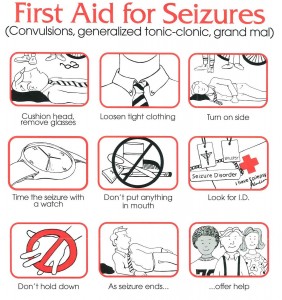Okay, so this was a crazy week and I feel like I fell a little behind. So I am spending my Saturday morning getting caught up on the dozen or so screencasts and readings for Week 7. ;)
I'm really digging this section on storytelling. I gotta say, I have a BA in English with an emphasis in Creative Writing and I
love to read and write, yet I don't think I've ever really considered story telling as a major element in my instruction. Oh sure I've used anecdotes in my instruction to break the ice, illustrate a point, etc. However, I don't think I've ever included story telling as a major pedagogical principle in my design. How can I have missed this for so long??
When watching the screencasts on Story telling, Common Craft, and Technology Tools, I'm getting psyched on incorporating storytelling into our major project. But (insert screeching tire sounds), how? This I'm not quite sure of!! Yikes! This week our project team members each gave ourselves assignments, and almost all of us gave ourselves the assignment of 1. downloading Captivate 6 and getting it to work with our different machines, 2. sharing our started captivate file (thanks Kassie) on DropBox, and 3. finish the Captivate tutorials on Lynda.com. Maybe when we meet over Connect this week we can brainstorm ways to incorporate story telling into our instruction!!
And Kassie is going to hate me, since we said we were going to use Windows Movie Maker as our sample for the technical aspect of editing tools. But after watching the Technology Tools screencast, I'm thinking should we look at WeVideo? I really like that it is a web-based software and allows for collaboration (great for K-12 since most schools systems really really professional learning communities and team teaching). Maybe we can use it for making our own video components AND use it as our sample technical portion. Hmm??? I wonder if that is being too ambitious to change that portion too (since the WMM part is already available to us via our 521 training).
Also, just a question, but Kassie (since you are my Hoosier Buddy this week), is that our materials being used in the Job Aid screencast?? Example #3 at 1:60. Oh wait, she said it is an example of iMovie. Well, it's definitely our training material doppleganger! Haha! (Also, I created one just like that when I ran the multimedia lab at BGSU!)
I also feel confident after watching the job aid screencast the my chosen topic (How to Respond to Behavioral Issues in a Special Education classroom) is perfect. I 100% fits the criteria that Dr. Leftwich mentioned.
When job is infrequent - the main audience would be substitute teachers. They may sub a lot, but likely don't sub in special education classes every time.
 |
Sometimes spec ed students who have difficult managing
frustration use aggressive behavior to express their
frustration. Special ed teachers, teacher aids, and substitute
teachers need to know how to calm these situations quickly
and efficiently when the do occur. |
|
When the situation is complex - even though your first instinct with some issues might be to call the office, different situations call for different responses. These vary and aren't easy to memorize.
When the consequences of the error are serious - the main purpose of responding appropriately to behavioral issues is to protect the safety of the other students, the staff, and the student themselves.
When there are not significant resources - no school system, school, or teacher has the money or time to completed a full training on handling behavioral issues with students with mental and/or physical disabilities to every sub that walks in the door. Especially since there is no guarantee that sub would need to training ever again after leaving that classroom.
This weekend I asked my husband to bring home any and all of the resources currently used for helping subs coming into special ed classrooms at his school. And I am hoping to have a solid draft of my job aid finished by the end of the weekend...
 It's a quick tutorial on "How To Make Your Own T-shirt Quilt".
It's a quick tutorial on "How To Make Your Own T-shirt Quilt".











